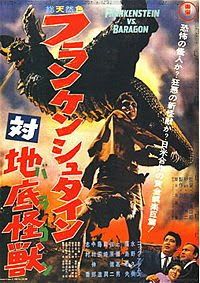By Doug Gibson
For a few brief years in the 1940s, Lon Chaney Jr. was the top monster man at Universal Studios. He even took Dracula away from Bela Lugosi in the vampire sequel. Chaney was a far better actor than many realize; he proved a great capable character actor in western and gritty dramas; think "High Noon" and "The Defiant Ones." But 70 years ago Universal wasn't sure if its star was "Lenny-turned-Monster" or a tortured intellectual, man-about-town.
Hence, Universal's last effort to keep Chaney as a leading man, the Inner Sanctum series, six psychological dramas, based on pulp literature, and early distant cousins of the soon-to-be-flourishing film noir of the late 40s and on. In most of the Inner Sanctum films, five of which were introduced by a floating head, Chaney was miscast as an upper-crust academic or a supposedly suave entertainer, the object of both treachery and adoration by beautiful women.
What played against those high hopes was that Chaney, despite a still-rugged build, had a face that was slowly morphing into folding decay courtesy of a severe alcohol addiction. He was also what you might call a "regular Joe" kind of guy, with passions that included hunting, bending the elbow and practical jokes.
As for the Inner Sanctums, which were B movie material, Chaney gave decent performances despite the casting, "Weird Woman" is pretty good, almost as good is "Calling Dr. Death," "Dead Man's Eyes" ... pretty bad. I had seen four and finally picked up the DVD to see them all.
"Strange Confession" threw me for a loop. The series entry, which for years had been filed away by Universal, away from TV, is a damn good 62-minute programmer. It's about a dedicated researcher, Chaney, who is exploited by his truly evil millionaire boss, an excellent J. Carrol Naish, who lusts after both quick millions marketing a flu medicine (and who cares if it's the medicine that works) and also for Chaney's very shapely wife, played by Brenda Joyce.
Early in the film, Chaney quits Naish's employ, realizing what scum he is. Blacklisted, Chaney's character, Jeff Carter, is working as an assistant pharmacist or something, barely able to plug out a living with his wife and toddler boy. Naish, a visitor to a party at the Carter's humble abode, offers his former scientist wealth if he'll return. Carter says no, but is later persuaded to accept the job by his wife, who is tired of poverty.
Joyce's Mary is a complex character. She clearly loves her husband but plays the traditional "Eve" character, persuading him to follow "Satan," Naish's Roger Graham. Also, rather creepily Mary seems to provide limited encouragement to Graham's slow but persistent efforts to have an affair with her. This was, of course, the Breen era, so we never even have a hint that adultery occurred but that is Graham's goal. He even sends Chaney's Carter off to Brazil, with an assistant played by a young Lloyd Bridges, to find the ingredients to complete the flu medicine. Chaney finds it, but not before a flu epidemic hits the U.S. Graham ignores Chaney's correct formula, and markets an inferior earlier concoction to make a quick buck.
This leads to a particularly heart-wrenching tragedy and a truly gruesome climax that, this again being the Breen era, is not shown in gory detail.
Although Chaney is an academic he's more of a loner, a socially awkward rumpled professor full of obsession and angst and he carries it off, playing a more determined Larry Talbot, Naish is also superb; he's pure evil, without conscience but also gifted with a silver tongue and the art of persuasion. Others who are good in smaller roles are Milburn Stone as a business confederate of Graham's and Mary Gordon as a stereotypical but appealing nanny to the now-prosperous Carter family.
Even as Universal's horror offerings solidified as B films they were still above the quality of Monogram and PRC C films. The chief reason was tight scripts, better supporting actors and lean direction. As with other "Universal Horrors," "Strange Confession," directed by John Hoffman, is a lean-mean offering with a disciplined plot that's over before you know it.
It's one of Chaney's better late-Universal films and his portrayal of a dedicated scientist cheated in many ways by a sociopath boss allows him to retain sympathy despite the revenge he takes. Below is a screen shot of Naish, Chaney and Joyce.






